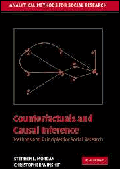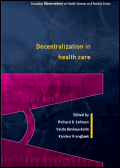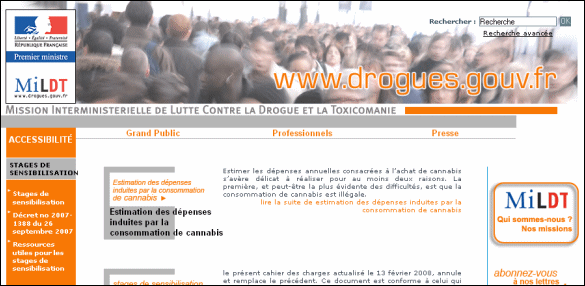LU POUR VOUS DE FEVRIER 2008 : livres du mois - sites du mois - working papers
Tous les lu pour vous
LES LIVRES DU MOIS
L'état de santé de la population en France rapport 2007 - Indicateurs associés à la loi relative à la politique de santé publique.
Salines E., Danet S.
Paris : La documentation française : 2008 : 254 p. Ministère de la Solidarité - de la Santé et de la Protection Sociale. (MSSPS). Direction de la Recherche - des Etudes et de l'Evaluation Statistique. (Drees). Paris.
Cet ouvrage fournit en 2007 une vision d'ensemble de l'état de santé de la population en France. Il constitue le second rapport de suivi des objectifs associés à la loi relative à la politique de santé publique du 9 août 2004, après une première édition en 2006. Ce rapport a été préparé, sous la coordination de la Drees, par un ensemble de partenaires, producteurs de données dans le champ de la santé (ADEME, AFSSA, Afssaps, Agence de la biomédecine, Assurance maladie, Dares, DGS-EA, Drees, InCa, Inpes, INRETS, Insee, Inserm, InVS, Irdes, OFDT, ONISR, UFSBD, USEN/Cnam). Outre une synthèse donnant une vision d'ensemble de l'état de santé de la population en France et la présentation commentée d'indicateurs de cadrage transversaux, à partir des données disponibles les plus récentes dans les champs couverts, le rapport comprend l'évaluation des indicateurs associés à 64 objectifs spécifiques. Les indicateurs produits au niveau national (France entière ou France métropolitaine) ont le plus souvent été déclinés selon le sexe, l'âge, la catégorie sociale et le niveau d'études. Ils ont, dans la mesure du possible, été comparés aux indicateurs équivalents mesurés dans les autres pays européens. De même, les disparités territoriales (régionales pour la plupart) ont été examinées lorsque les données le permettaient.
Counterfactuals and causal inference : methods and principles for social research.
Analyse contrefactuelle et inférence causale : méthodes et principes pour la recherche sociale.
Morgan S.L., Winship C.
New York : Cambridge University Press : 2007 : XI-319 p.
Did mandatory busing programs in the 1970s increase the school achievement of disadvantaged minority youth? Does obtaining a college degree increase an individual's labor market earnings? Did the use of the butterfly ballot in some Florida counties in the 2000 presidential election cost Al Gore votes? If so, was the number of miscast votes sufficiently large to have altered the election outcome? At their core, these types of questions are simple cause-and-effect questions. Simple cause-and-effect questions are the motivation for much empirical work in the social sciences. This book presents a model and set of methods for causal effect estimation that social scientists can use to address causal questions such as these. The essential features of the counterfactual model of causality for observational data analysis are presented with examples from sociology, political science, and economics (4e de couverture).
Decentralization in health care.
Décentralisation des systèmes de santé.
Saltman R.B., Bankauskaite V., Vrangbaeck K.
Maidenhead : Open University Press ; Copenhague : Organisation mondiale de la santé, Bureau régional de l'Europe : 2007 : 298 p.
Decentralization has become a popular management strategy in many European health care systems. The logic of decentralization is an intrinsically powerful idea: that smaller organizations, properly structured and steered, are inherently more agile and accountable than larger organizations. In a world where large organizations control wide swathes of both public and private sector activity, the possibility of establishing more locally operated, locally responsible institutions holds out great attraction. This text explores the capacity and impact of decentralization within European health care systems. It examines both the theoretical underpinnings as well as recent practical experiences, drawing on both published literature and evidence collected directly from the field. The book also assesses the appropriateness of management processes in health systems for implementing a successful decentralization strategy.
Responding to the challenge of cancer in Europe.
Répondre au défi du cancer en Europe.
Coleman M.P., Alexe D.M., Albreht T., Mckee M.
Ljubljana : Institute of Public Health of the Republic of Slovenia : 2008 : 327 p.
At present, with more than 3 million new cases and 1.7 million deaths each year, cancer represents the second most important cause of death and morbidity in Europe. Without effective interventions, the cancer burden will increase dramatically. However, comprehensive cancer prevention and control policies can bring significant benefits. For these reasons, Slovenia decided to focus on cancer as the key public health priority during its Presidency of the Council of the European Union in the first half of 2008. A key step was to review the current status of cancer control in the EU in order to produce policy recommendations for those concerned with the prevention, management and palliation of cancer. This book is the result. It has been produced as a collaboration between internationally recognized public health institutes in the EU, under the umbrella Fighting Against Cancer Today (FACT). The book provides an overview of the epidemiology of cancer, including a discussion of the major risk factors. Comprehensive cancer plans are discussed as an approach to cancer control. Contributors examine the current status and plausible future developments for cancer screening in the EU; drug discovery, evaluation and deployment; the role of psychosocial oncology; and the provision of palliative care. Current patterns of cancer survival and the challenges facing cancer researchers in Europe today are examined. Three case-studies are provided. One focuses on changes in the clinical management of cancer, using the example of colorectal cancer in France. Two broader descriptions of cancer control evoke the current situation, recent achievements and continuing challenges in eastern Europe and in Slovenia.
Maîtriser les finances publiques ? Pourquoi, comment ?
Ecalle F., Barre R.
Paris : Economica : 2005 : 350 p.
Les déficits publics soutiennent-ils la croissance ? Comment sont-ils mesurés et quelle est la situation des finances publiques françaises ? Faut-il fixer une limite à l'endettement public ? Quel est l'effet des prélèvements obligatoires sur l'emploi et comment évaluer les dépenses publiques ? Quels sont les enjeux de la loi organique de 2001 sur les lois de finances pour la gestion publique et faut-il poursuivre la décentralisation ? Les comptes de l'assurance maladie peuvent-ils être durablement équilibrés ? La réforme de 2003 a-t-elle résolu le problème des retraites ? Ce sont quelques unes des nombreuses questions d'actualité auxquelles répond ce livre. Il traite la plupart des sujets importants relatifs aux finances publiques en suivant un fil directeur qui amène le lecteur à trouver les réponses à deux questions plus fondamentales : " Pourquoi et comment maîtriser les dettes et déficits publics, d'une part, les prélèvements obligatoires et dépenses publiques, d'autre part ? ". Alors que les contraintes budgétaires sont particulièrement fortes en France et que nous sommes tous plus ou moins directement concernés, ce livre développe les informations et les analyses à la fois les plus pertinentes et les plus récentes. Sa présentation pédagogique en fait un ouvrage de référence pour tous ceux qui s'intéressent aux finances publiques de la France et souhaitent comprendre les débats que soulève leur gestion.
LES SITES DU MOIS DE FEVRIER
Elisad Gateway, portail européen sur l'alcool les drogues et les addictions
http://www.addictionsinfo.eu/
Presentation
Ce portail sur les addictions est un service en ligne gratuit proposant un accès aux meilleures ressources du web en Europe sur les drogues, l'alcool, le tabagisme, le jeu et les thèmes associés. Toutes les ressources ont été évaluées.
La recherche s'effectue en texte libre ou en naviguant dans les catégories thématiques. Une description de chaque site est donnée.
Inserm – Base de connaissances Alcool
http://infodoc.inserm.fr/bdc/ThemAlcoolPubli.nsf
Presentation
Cette base de connaissances Inserm sur l'Alcool est construite à partir des deux expertises collectives de l'Inserm et enrichie par l'actualité scientifique.
Elle aborde tous les aspects de la problématique (mécanismes biologiques, consommation, interaction, aspects socioculturels etc.), en proposant des liens vers des références d'articles, ouvrages, études ou enquêtes.
Elle propose une liste des laboratoires Inserm engagés dans le domaine, les programmes et projets, des données épidémiologiques nationales, le texte intégral des deux expertises collectives traitant du sujet, des publications écrites et audiovisuelles et une liste de liens.
Ireb (Institut de Recherches Scientifiques sur les Boissons)
http://www.ireb.com/
Presentation
L'Ireb est une association loi 1901 qui subventionne des recherches sur l'alcool, réalise des études sur la consommation d'alcool. Il est financé par des producteurs de boissons alcoolisées.
Sur son site, se trouve une base de donnée interrogeable en français et en anglais. Elle est alimentée à partir de documents indexés (plusieurs milliers de références). Les ressources actuelles sont constituées d'abonnements à des revues de langue française ou anglaise, d'ouvrages, de tirés-à-part, de thèses, ainsi que de synthèses de colloques et de rapports de recherches.
Une revue de presse et une lettre d'information sont également disponibles en ligne ainsi que les publications « Focus alcoologie » les « cahiers de l'Ireb » (2 documents en ligne depuis 2005).
MILDT (Mission Interministérielle de Lutte contre les Drogues et les Toxicomanies)
http://www.drogues.gouv.fr/
Presentation
Placée sous l'autorité du Premier ministre, la Mission Interministérielle de Lutte contre la Drogue et la Toxicomanie (MILDT) est chargée de coordonner l'action des pouvoirs publics en matière de lutte contre la drogue et la toxicomanie en veillant à la cohérence entre les différentes approches préventive, sanitaire, répressive et internationale. En 1999, son champ de compétences a été élargi à l'alcool, au tabac et aux médicaments psycho actifs.
Plusieurs bases de données sont destinées aux professionnels : base bibliographique, base des outils de prévention (albums illustrés, brochures et dépliants, cartes et affiches, expositions, mallettes pédagogiques et jeux, Cd-Roms et vidéos), la base RECOURS (base des études et recherches en cours) qui recense un certain nombre de travaux de recherche menés actuellement dans le champ des drogues et des toxicomanies en France. Enfin la base ILIAD regroupe les principaux indicateurs disponibles aux niveaux départemental et régional dans le domaine des addictions aux substances illicites et licites.
Il présente également une liste de bases documentaires internationales dans le domaine de l'alcool, alimentée par les CIRDD (Centres d'Information Régionaux sur les Drogues et les Dépendances). L'espace grand public propose toutes les informations utiles dans le domaine de la lutte contre les dépendances toxiques (stages de sensibilisation, annuaires des structures de prévention spécialisées, les ressources, un forum alcool-famille…)
OFDT (Observatoire des Drogues et des Toxicomanies)
http://www.ofdt.fr/
Presentation
Organisme public chargé du recueil, de l'analyse et de la synthèse des données relatives aux drogues illicites, à l'alcool et au tabac en France.
Son site offre des données au niveau national, local et européen. Il publie tous les deux ans un rapport dressant périodiquement l'état du phénomène des drogues et des dépendances en France.
Autres sites d'intérêt :
- Alcohol industry and policy databases (USA)
(http://www.marininstitute.org/alcohol_industry/index.htm) - Association Nationale de Prévention en Alcoologie et Addictologie. (A.N.P.A.A.)
(http://www.anpaa.asso.fr/index_flash.html) - Etats Généraux de l'Alcool
(http://www.etatsgenerauxalcool.fr/) - Fédération des Acteurs de l'Alcoologie et de l'Addictologie (F3A)
(http://www.alcoologie.org/) - Pôle Ressources National, Médecine Générale et conduites addictives (P.R.N.)
(http://www.prn-addictions.org/pro/
http://www.prn-addictions.com/public/)
VU DE L'ETRANGER : QUELQUES WORKING PAPERS ANALYSES
Assurance maladie
The distortionary effect of health insurance on health demand. 

L'effet de distorsion produit par l'assurance santé sur la demande de soins.
Fombaron N., Milcent C.
Paris : PSE : 2007/02 : 34 p.
Ce papier propose d'étendre le modèle de Rothschild et Stiglitz (1976) afin de cerner l'impact de l'assurance santé sur la demande de soins. Alors que le modèle pionnier suppose implicitement l'équivalence entre prix du traitement et inconfort lié à la maladie, nous introduisons la possibilité que le "coût des réparations" diffère du "montant des dommages". Demande d'assurance et demande de soins sont étudiées parallèlement sous information symétrique et asymétrique. La distinction introduite entre prix du traitement et inconfort a trois conséquences majeures. Premièrement, les agents sont prêts à payer plus pour se soigner en présence d'un marché d'assurance santé. Deuxièmement et paradoxalement, la sélection adverse peut conduire le marché à diminuer le prix des soins (par rapport à une situation d'information parfaite). Finalement, notre modèle fait apparaître un phénomène fréquemment observé dans la réalité mais inexistant dans le modèle de Rothschild et Stiglitz : une partie de la population peut choisir de ne pas s'assurer (bien que ne renonçant pas à se soigner en cas de maladie) et ce, même en présence d'une concurrence sur le marché de l'assurance.
Characteristics of the Social Security System in Finland. 

Les caractéristiques du sytème de sécurité sociale en Finlande.
Ministry of Social Affairs and Health. Helsinki. FIN
Helsinki : Ministry of social affairs and health : 2007 : 32 p.
The Ministry of Social Affairs and Health has published this brochure about the social security system in Finland. The Finnish social security system consists of benefits based on residence and employment. All persons permanently resident in Finland are covered for pensions, healthcare services and health insurance, parental allowances and family benefits. Further conditions are attached to the award of some benefits to persons resident in the country, relating mainly to duration of residence. The earnings-related pension scheme and accident and occupational disease insurance are areas of social security based exclusively on employment.
Does Medicare save lives ? 

Le Medicare sauve-t'il des vies ?
Card D., Dobkin C., Maestas N.
Cambridge : NBER : 2007/11 : 33 p.
The health insurance characteristics of the population changes sharply at age 65 as most people become eligible for Medicare. But do these changes matter for health? We address this question using data on over 400,000 hospital admissions for people who are admitted through the emergency room for "non-deferrable" conditions - diagnoses with the same daily admission rates on weekends and weekdays. Among this subset of patients there is no discernible rise in the number of admissions at age 65, suggesting that the severity of illness is similar for patients on either side of the Medicare threshold. The insurance characteristics of the two groups are much different, however, with a large jump at 65 in the fraction who have Medicare as their primary insurer, and a reduction in the fraction with no coverage. These changes are associated with significant increases in hospital list chargers, in the number of procedures performed in hospital, and in the rate that patients are transferred to other care units in the hospital. We estimate a nearly 1 percentage point drop in 7-day mortality for patients at age 65, implying that Medicare eligibility reduces the death rate of this severely ill patient group by 20 percent. The mortality gap persists for at least two years following the initial hospital admission.
What public employee health plans can do to improve health care quality : examples from the States. 

Les plans de santé publiques destinés aux employés peuvent-ils améliorer la qualité des soins ? exemples des Etats-Unis.
Mckethan A., Savela T., Joines W.
New York : The Commonwealth Fund : 2008/01 : 26 p.
In recent years, health system stakeholders have experimented with a wide range of efforts to stimulate quality improvement, often combined with efforts to contain costs. In this report, the authors explore strategies that public and private purchasers are using to improve care quality, focusing specifically on the role that states play as employers providing health benefits for public employees and retirees. Examples of innovations used by state public employee health plans include: promoting provider adherence to clinical guidelines and best practices, publicly disseminating provider performance information, implementing performance-based incentives, developing coordinated care interventions, and taking part in multi-payer quality collaborations. This report can be used by public employee health plans and other large purchasers making.
What is the impact of duplicate coverage on the demand for health care in Germany ? 

Quel est l'impact d'une couverture maladie double sur la demande de soins en Allemagne ?
Vargas M.H., Elhewaihi M.
Munich : Munich Personal RepEc Archive : 2007/11 : 13 p.
Duplicate coverage involves those individuals who hold public health insurance, and purchase additional private coverage. Using data from the German Institute for Economic Research, we try to investigate the impact of duplicate coverage on the demand for healthcare (measured in number of visits to doctors). Given the simultaneity of the choices to take out additional private health insurance coverage, we estimate a negative binomial model to measure this impact. We also estimate a a Full Information Maximun Loglikelihood (FIML), known as Endogenous Switching Poisson Count Model and we compare these results with the standard maximum log likelihood (ML) estimators of the negative binomial model. The Results show that, there is a positive difference on the level of health services demanded when there is a duplicate coverage. We found also that there is evidence to think that in Germany there is a feedback between duplicate coverage and the demand of health services.
Economie de la santé
Health and Health Economics : a conceptual framework. 

Santé et économie de la santé : un cadre conceptuel.
Himanshu Sekhar R., Narayan C Handra N.
Munich : Munich Personal RepEc Archive : 2007 : 9 p.
Over the last three decades, treating health economics as an independent scientific discipline and providing specific treatment to the topics related to the economics of the health care sector have become more and more common. Currently, the field is so well established that it has appeared in the ordinary curriculum of most universities, and even if health economists are mainly to be found in the medical departments, the connections to economics proper are being strengthened, and the methodologies applied are getting refined. In this connection the paper highlights about the concept of health, why does health matter, relationship between health and Health Economics.
World in Your Pocket. A Handbook of International Health Economic Statistics 2007. 

Institute of Health Economics. (I.H.E.). Edmonton. CAN
Edmonton : Institute of Health Economics : 2007 : 52 p.
World In Your Pocket - a Handbook of International Health Economic Statistics includes the most current available data, presented in separate sections on health status, health care costs, health resources, health resource utilization and health system performance. The basic unit of observation is the individual country. Indicators are reported at the international level. Space limitations require us to limit the number of countries in the international charts. We selected a group of countries with approximately the same level of economic development as Canada, including Australia, Finland, France, Germany, Italy, Japan, the Netherlands, New Zealand, Spain, Sweden, the United Kingdom and the United States. Data was not available for all countries in every chart. We also included a number of developing countries in a select number of international charts. We selected a group of countries that have approximately the lowest Gross Domestic Product (GDP) in Africa, South America, and Asia.
Economic analysis of cost-effectiveness of community engagement to improve health. 

Analyse économique du coût efficacité de l'engagement communautaire dans l'amélioration de l'état de santé.
Carr-Hill R., Street A.
York : University of York : 2007/12 : 25 p.
Liberty of association is one of the building blocks of a democratic society, and presumes that community engagement in a democratic society is universally a good thing. This presumption is not subject to economic analysis, but the issue considered here is whether community engagement is a better vehicle for improving the community's health than another approach. The problems of applying the standard framework of economic evaluation to consider this issue include: multiple perspectives and time frames; identifying and costing activities and specifically the costs of volunteer time; identifying and measuring benefits; identifying comparator communities; how the intervention interacts with the community and therefore identifying end gainers and losers and eventually how the former might compensate the latter; attribution of any changes in community (health) to the approaches and methods of community engagement (CE); quantification across the whole range of community engagement. We consider three possible ways to apply the tools of economic appraisal to assess community engagement, these being: developing a typology; relying just on effectiveness data from the literature and guesstimating costs; and developing a scenario based on partial information about both costs and benefits. We assess the impact of community engagement on health and health behaviour; the contribution of community engagement to supporting social networks and social capital formation; and other impacts specific to a particular situation, including collective and ideological outcomes (whether of citizenship, obedience or political literacy). We conclude with a set of questions to ask of any CE intervention.justification of health economics.
Hôpital
Hospital Type and Patient Outcomes : An Empirical Examination Using AMI (Acute Myocardial Infarction) Re-admission and Mortality Records. 

Type de l'hôpital et résultats pour le patient : un examen empirique à partir des données de ré-admission et de mortalité pour infartus aigu du myocarge.
Jensen P.J., Webster E., Witt J.
Victoria : Melbourne Institute of Applied Economic and Social Research : 2007/11 : 29 p.
This paper investigates whether there are differences in patient outcomes across different types of hospitals using patient-level data on re-admission and mortality associated with acute myocardial infarction (AMI). Hospitals are grouped according to their ownership status (private, teaching, non-teaching) and their location (metropolitan, country and remote country). Using data collected from 130 Victorian hospitals on 19,000 patients admitted to a hospital with their first AMI between January 2001 and December 2003, we consider how treatment affects the likelihood of various outcomes based on unplanned re-admission and mortality. A hazard rate model is used to assess the effect of hospital type on patient outcome. Control variables included in the estimating model are patient-level characteristics such as age, gender, co-morbidity, country of birth, and indigenous, marital and socio-economic status. We find that there are significant differences across hospital types in the outcomes observed for patients presenting with their first AMI – private hospitals persistently outperform teaching, non-teaching and country hospitals. Interestingly, we find that result is that the impact of hospital type is quite robust to the definition of “patient outcomes” that we adopt and our attribution strategy, but not to whether we include multiple-hospital patients.
Did 'Targets and Terror' Reduce Waiting times in England for Hospital Care? 

Les stratégies dites des "objectifs" et de la "terreur" réduisent-elles les listes d'attentes pour les soins hospitaliers en Angleterre ?
Propper C., Sutton M., Whitnall C., Windmeijer F.
Bristol : University of Bristol, CMPO : 2007/11 : 32 p.
Waiting times have been a central concern in the English NHS, where care is provided free at the point of delivery and is rationed by waiting time. Pro-market reforms introduced in the NHS in the 1990s were not accompanied by large drops in waiting times. As a result, the English government in 2000 adopted the use of an aggressive policy of targets coupled with publication of waiting times data at hospital level and strong sanctions for poor performing hospital managers. This regime has been dubbed ‘targets and terror'. We estimate the effect of the English target regime for waiting times for hospital care after 2001 by a comparative analysis with Scotland, a neighbouring country with the same healthcare system that did not adopt the target regime. We estimate difference-in-differences models of the proportion of people on the waiting list who waited over 6, 9 and 12 months. Comparisons between England and Scotland are sensitive to whether published or unpublished data are used but, regardless of the data source, the ‘targets and terror' regime in England lowered the proportion of people waiting for elective treatment relative to Scotland.
The economic cost of wait times in Canada. 

Coût économique des temps d'attente au Canada.
Stocks E., Somerville R.
Ottawa : Canadian Medical Association : 2007/11 : 57 p.
This study presents the economic costs of excessive wait times in Canada's medical system. It updates and extends analysis conducted in 2006 for the Canadian Medical Association and the British Columbia Medical Association. Unlike other studies that have examined the overall cost of wait lists and that therefore have had limited value in targeting health care spending, the costs presented in this study are those incurred by waiting longer than medically recommended for treatment. This “excess wait” is what current policy initiatives are attempting to reduce. The study, therefore, estimates the potential economic benefits that can be achieved through successful health care policy initiatives to eliminate these wait times. Of the 4 priority areas reviewed in this study, the highest economic costs are generated for total joint replacement surgery (an average of around $26 400 per patient), followed by MRIs ($20 000) and CABG surgery ($19 400) with cataract surgery yielding the lowest costs ($2900). Although significant differences in costs exist among the provinces, no one province has either the highest or the lowest costs in all priority areas.
How costly is hospital quality ? A revealed-preference approach. 

National Bureau of Economic Research (N.B.E.R.). Cambridge CA. USA
Cambridge : NBER : 2008/01 : 37 p.
One of the most important and vexing issues in health care concerns the cost to improve quality. Unfortunately, quality is difficult to measure and potentially confounded with productivity. Rather than relying on clinical or process measures, we infer quality at hospitals in greater Los Angeles from the revealed preference of pneumonia patients. We then decompose the joint contribution of quality and unobserved productivity to hospital costs, relying on heterogeneous tastes among patients for plausibly exogenous quality variation. We find that more productive hospitals provide higher quality, demonstrating that the cost of quality improvement is substantially understated by methods that do not take into account productivity differences. After accounting for these differences, we find that a quality improvement from the 25th percentile to the 75th percentile would increase costs at the average hospital by nearly fifty percent. Improvements in traditional metrics of hospital quality such as risk-adjusted mortality are more modest, indicating that other factors such as amenities are an important driver of both hospital costs and patient choices.
Inégalités de santé
Education and Health in G7 Countries : Achieving Better Outcomes with Less Spending.
Education et santé dans les pays du G7 : Améliorer les résultats en santé en dépensant moins.
Carcillo S., Gunnansson V., Verhoeven M.
Washington : IMF : 2007/11 : 52 p.
Enhancing the efficiency of education and health spending is a key policy challenge in G7 countries. The paper assesses this efficiency and seeks to establish a link between differences in efficiency across countries and policy and institutional factors. The findings suggest that reforms aimed at increasing efficiency need to take into account the nature and causes of inefficiencies. Inefficiencies in G7 countries mostly reflect lack of cost effectiveness in acquiring real resources, such as teachers and pharmaceuticals. We also find that high wage spending is associated with lower efficiency. In addition, lowering student-teacher ratios is associated with reduced efficiency in the education sector, while immunizations and doctors' consultations coincide with higher efficiency in the health sector. Greater autonomy for schools seems to raise efficiency in secondary education.
Santé et travail
Does Job Satisfaction Improve the Health of Workers? New Evidence Using Panel Data and Objective Measures of Health. 

La satisfaction au travail améliore t'elle l'état de santé des travailleurs. Nouvelles données issues d'un panel et de mesures objectives de santé.
Fischer J.A.V., Souza-Posa A.
Bonn : IZA : 2007/11 : 37 p.
This paper evaluates the relationship between job satisfaction and measures of health of workers using the German Socio-Economic Panel (GSOEP). Methodologically, it addresses two important design problems encountered frequently in the literature: (a) cross-sectional causality problems and (b) absence of objective measures of physical health that complement self-reported measures of health status. Not only does using the panel structure with individual fixed effects mitigate the bias from omitting unobservable personal psychosocial characteristics, but employing more objective health measures such as health-system contacts and disability addresses such measurement problems relating to self-report assessments of health status. We find a positive link between job satisfaction (and changes over time therein) and subjective health measures (and changes therein); that is, employees with higher or improved job satisfaction levels feel healthier and are more satisfied with their health. This observation also holds true for more objective measures of health. Particularly, improvements in job satisfaction over time appear to prevent workers from (further) health deterioration.
Soins primaires
Service Production and Patient Satisfaction in Primary Care. 

Production de services et satisfaction des patients en soins primaires.
Carlsen F., Grytten J., Skau I.
Trondheim : Norvegian University of Science and Technology : 2007/12 : 23 p.
The institutional setting for the study was the primary physician service in Norway, where there is a regular general practitioner scheme. Each inhabitant has a statutory right to be registered with a regular general practitioner. There are large differences between physicians in service production. Objective: We studied whether difference in services production between physicians has an effect on how satisfied patients are with the services that are provided. Methodology: Data about patient satisfaction were obtained from a survey of a representative sample of the population. We obtained data about how satisfied the respondents were with waiting time to get an appointment and with two aspects of the quality of care they actually received: the amount of time the physician spent with them, and to what extent they perceived that the physician took their medical problems seriously. The survey data were merged with data on service production for the primary physician that the respondent was registered with. Service production was measured as the number of consultations per person on the list, and as the number of laboratory tests per consultation. Results: There was a positive and relatively strong association between the level of service production of the general practitioners and patient satisfaction with waiting time for a consultation. The association was weaker for satisfaction with the quality of care the respondents actually received. Conclusion: A high level of service production can be justified, since it increases patient satisfaction, particularly satisfaction with access to services.
Physicians' Multitasking and Incentives: Empirical Evidence from a Natural Experiment. 

Dumont E., Fortin B., Jacquemet N., Shearer B.
Québec : CIRPEE : 2007/11 : 31 p.
We analyse how physicians respond to contractual changes and incentives within a multitasking environment. In 1999 the Quebec government (Canada) introduced an optimal mixed compensation system, combining a fixed per diem with a discounted (relative to the traditional fee-for-service system) fee for services provided. We combine panel survey and administrative data on Quebec physicians to evaluate the impact of this change in incentives on their practice choices. We highlight the differentiated impact of incentives on various dimensions of physician behaviour by considering a wide range of labour supply variables: time spent on seeing patients, time devoted to teaching, administrative tasks or research, as well as the volume of clinical services and average time per clinical service. Our results show that, on average, the reform induced physicians who changed from FFS to MC to reduce their volume of (billable) services by 6.15% and to reduce their hours of work spent on seeing patients by 2.57%. Their average time spent per service increased by 3.58%, suggesting a potential quality-quantity substitution. Also the reform induced these physicians to increase their time spent on teaching and administrative duties (tasks not remunerated under the fee-for-service system) by 7.9%.
A Structural Misclassification Model to Estimate the Impact of Physician Incentives on Healthcare Utilization. 

Modèle structurel de mauvaise classification pour estimer l'impact des mesures incitatives à destination des médecins sur l'utilisation des services de santé.
Arrieta A.
Munich : Munich Personal RepEc Archive : 2007/11 : 23 p.
The issue of over-utilization of medical procedures has generated strong debate in the United States. It is well acknowledged that, in the agency relationship between physicians and patients, the informational advantage gives doctors an incentive to deviate from the appropriate treatment as defined for a patient's health status, thus incurring over- or under- utilization. However, the empirical consequence of this problem has not been adequately considered. In particular, physician agency breaks the Correspondence between appropriate treatment and observed treatment, generating a problem whose characteristics and effects on estimation are analogous to a classifcation error. However, the error is non-random. Empirical literature that does not consider the misclassifcation problem understates the impact of clinical and non-clinical factors on healthcare utilization. This paper proposes a structural misclassification model in which the physician behavior is modeled to characterize the structure of the measurement error. The model captures the interaction between a physician's incentives and a patient's health status, and returns consistent estimators. It also lets us identify the degree of deviation from appropriate treatment (misclassifcation probability) due to physician incentives, and to compute risk-adjusted utilization rates based on clinical factors only. The model is applied to the cesarean section deliveries performed in the state of New Jersey during the 1999-2002 period. Our results show a moderate but growing rate of non-clinically required c-sections of around 3.2%. We conclude that the growth of the c-section rates in New Jersey over these years is explained mainly by non-clinical factors.
An Application of Price and Quantity Indexes in the Analysis of Changes in Expenditures on Physician Services. 

Une application d'indices de prix et de quantité pour analyser les changement en matière de dépenses en services médicaux.
Denton F.T., Feaver C.H., Spencer B.G
Hamilton : SEDAP : 2007/11 : 25 p.
Des indices de prix et de quantité, calculés à partir de données nouvellement accessibles de 1992 et 2004, sont utilisés dans l'analyse des dépenses en services médicaux dans la province de l'Ontario (Canada). L'indice de prix de ces derniers a augmenté moins rapidement que la tendance générale de l'inflation et l'indice de quantité représente la plus grande partie de l'augmentation des dépenses des médecins. Les indices de quantité suggèrent des gains substantiels des services offerts par habitant, particulièrement chez les adultes d'un certain âge. Ils révèlent aussi une augmentation de la productivité des médecins légèrement plus élevée que les hausses observées dans la plupart des secteurs de l'économie.
Systèmes de santé
Our Troubled Health Care System: Why Is It So Hard to Fix? Nineteenth Annual Herbert Lourie Memorial Lecture on Health Policy. 

Notre système de santé en péril : pourquoi est-il su dur d'être dans l'embarras ? Neuvième congrès annuel sur la politique de santé du Mémorial Herbert Laurie.
Feder J.
Washington : Georgetown University Public Policy Institute : 2008/01 : 15 p.
This brief draws heavily on Judith Feder, 2004, "Crowd-Out and the Politics of Health Reform," The Journal of Law, Medicine, and Ethids 32(3): 461-464. We all know that affordable health care is now back on the political agenda, and it's about time! Because all of us--families, businesses, and governments--are struggling with the ever-increasing costs of care. Every year about a million people are added to the rolls of the uninsured. In 2006, it was even more, over 2 million. The number of people without health insurance coverage has reached more than 47 million. People *with* insurance are seeing their benefits dwindle and their health care costs consume their wabes. Even people with health insurance find themselves unable to pay their medical bills and going without needed care. The bottom line is that, increasingly, our health insurance system fails to protect us when we get sick.
The health sector in the Slovak Republic: efficiency and reform. 

Le secteur de la santé en République Slovaque : efficacité et réforme.
Gunnarsson V., Lugaresi S., Verhoeven M.
Washington : Fonds Monétaire International : 2007/09 : 25 p.
The paper assesses the financial situation of the health sector in the Slovak Republic. It also evaluates the efficiency of health expenditures and service delivery in comparison to the OECD and other new EU member states and suggests avenues for cost recovery and reform. The health sector of the Slovak Republic is plagued by financial problems. To turn around health system finances and achieve larger gains in health outcomes, the efficiency of health spending needs to increase and the mix and quality of real health resources need to be improved. Although Slovak's overall health spending efficiency is on par with that of the OECD, substantial inefficiencies occur in the process of transforming intermediate health inputs into health outcomes. Efficiency may be enhanced by containing the cost of drugs and reducing reliance on hospital care. Also, although cost-effectiveness may be relatively high at present, its sustainability in the future is an issue.
Changing Nova Scotia's Healthcare System : Creating Sustainability through Transformation. 

Mutation du système de santé de Nouvelle Ecosse : comment le rendre soutenable en le transformant ?
Department of Health. Nova Scotia. Halifax NS. CAN
Nova Scotia : Department of Health : 2007/12 : 394 p.
The province of Nova Scotia is taking action on recommendations from a provincial health system operational review to make Nova Scotia's health-care system more effective, efficient and sustainable for all Nova Scotians, now and in the future. The recommendations outlined in the report cover every aspect of the health-care system. It notes Nova Scotia's system is heavily focused hospital-based care, which is the most expensive way to deliver health-care services. It recommends a focus on community-based care, and restructuring across the system.
Devolving policy, diverging values ? The values of the United Kingdom's National Health Services. 

Politique de décentralisation, valeurs divergentes ? Les valeurs du National Health Services au Royaume-Uni.
Greer S.L., Rowland D.
Londres : The Nuffield Trust : 2007 : 102 p.
This report is the result of a major Nuffield Trust project on NHS Values Between Devolution and Europe. The Trust, together with project partners across the UK, ran a series of high-level seminars discussing the values embedded in the health services and policies of England, Northern Ireland, Scotland, Wales and the European Union. The different essays highlight some very different entrenched values, including commitments to: _ ‘collaboration and collectivism' in Scotland; the very similar ‘communication and collectivism' in Wales; democratic participation, neutrality and the new public health in Northern Ireland: ‘having a say rather than having a choice'. All are complex and under tension, but all stand apart from England in their commitment to communities and participation rather than markets and technical solutions. They also stand in contrast to the EU, which is in the throes of an ill-defined debate in which many different values are being put forth as guides to policy and more or less good descriptions of what might be shared between 27 countries. There can be a tension between the values enunciated by policymakers and the ones revealed in practice. Tracing the connections is difficult, but to understand real values we must focus on the values revealed in the everyday lives of the health services. The four UK health services emerge from common roots and common structures, so it is no surprise that the much broader process of European Union politics has produced a great diversity of values. The newness of EU health policy, further, means that the policies in which values would be encoded are still being debated. Here, where there is scant policy in which to seek revealed values, articulate statements of shared values are particularly likely to lead the debate. UK political debates and political institutions have not recognised or adapted to the different values articulated by policymakers in different capitals. This creates problems for the stability of devolution, the autonomy of devolved governments to pursue distinctive values, and the compatibility of the UK systems with EU law. Better intergovernmental relations will help, but recognising the differences, while appreciating the extent to which values are shared, will contribute to more civilised debates.
Vieillissement
Impact of First Occupation on Health at Older Ages. 

Impact du premier travail sur la santé à des âges avancés.
Sindelar J.L., Fletcher J., Falba T., Keenan P., Gallo W.T.
Cambridge : NBER : 2007/12 : 30 p.
Occupation is discussed as a social determinant of health. Occupation has received little attention in this light in the economics literature. We examine occupation in a life-course framework and use measures of first-occupation, initial health, and mother's education. We contend that first occupation is a choice made relatively early in life that affects health outcomes at later ages. We examine first-occupation for two reasons: 1) there is growing evidence that early determinants affect later health and occupation has received little attention in this regard and 2) first occupation is predetermined in analysis of later health, which helps to address the issue of potential simultaneity. Using data from the Panel Study of Income Dynamics (PSID) we estimate the impact of initial occupation on two measures of health later in life: respondent-reported fair/poor health and ever suffering a heart attack. The PSID offers the opportunity to examine a lifecycle perspective as we can examine the impact of early occupation on later health while controlling for several predetermined conditions such as mothers education and health in youth. Estimates suggest that first-occupation has a durable impact on later health, ceteris paribus, but that the impact varies by health measure and the set of control variables in regression specifications. Early choice of occupation could be a critical factor in successful aging and this information may pave the way to developing more effective workplace and public policies to improve health in older ages.
Long-term population projections in Europe: How they influence policies and accelerate reforms. 

Bogaert H.
Bruxelles : Bureau Fédéral du Plan : 2007/10 : 24 p.
The long-term demographic projections have progressively raised concerns about the consequences of ageing population. To better understand those changes and measure their size, projections of social expenditure have been built and progressively refined. Confronted with a large budgetary cost of ageing in the long run, the Government's alternative is: solve the problem when it comes up or try to anticipate the negative results and prevent them. Three ways are to be considered that are not mutually incompatible: reforming the social system in order to reduce the cost for the present and future generations, increasing the tax or contribution receipts by pushing up employment rates and the trend growth of GDP and saving now in the public sector to cover the increase of the future expenditure. The paper shows that, since the end of the nineties, a broad movement of reforms has taken place in the EU which involves this three-pronged strategy.
Deinstitutionalisation and community living - outcomes and costs : report of a european study. Volume 1- Volume 2 - Volume 3 

Désinstitutionalisation et vie en communauté – Impact et coûts : rapport d'une étude européenne. Volumes 1-2-3.
Mansell J., Knapp M., Beadle-Brown J., Beecham J.
Canterbury : Tizard Centre : 2007 : 3 vol. (14 ; 133 ; 599 p.)
This project aimed to bring together the available information on the number of disabled people living in residential institutions in 28 European countries, and to identify successful strategies for replacing institutions with community-based services, paying particular attention to economic issues in the transition.









